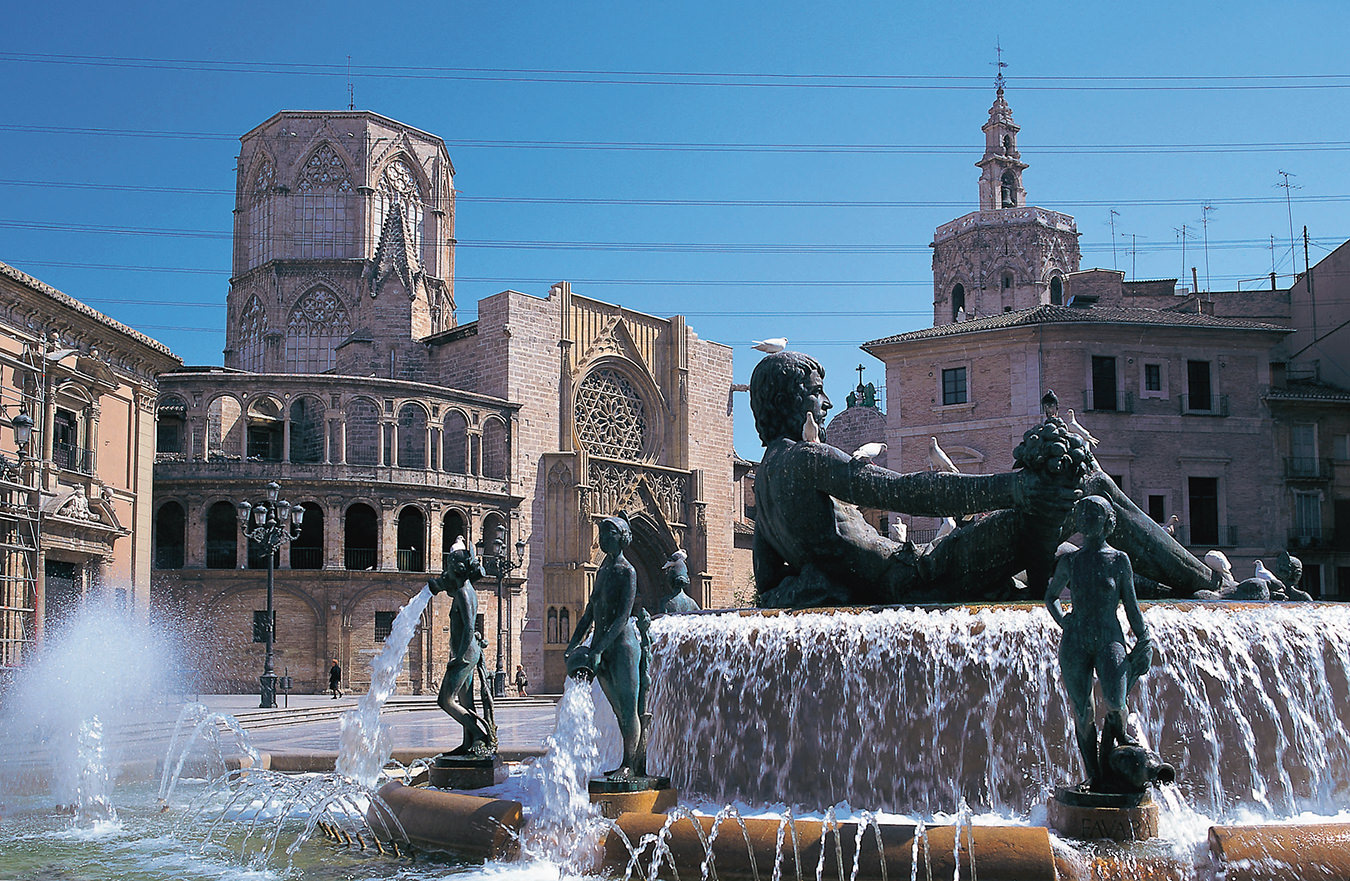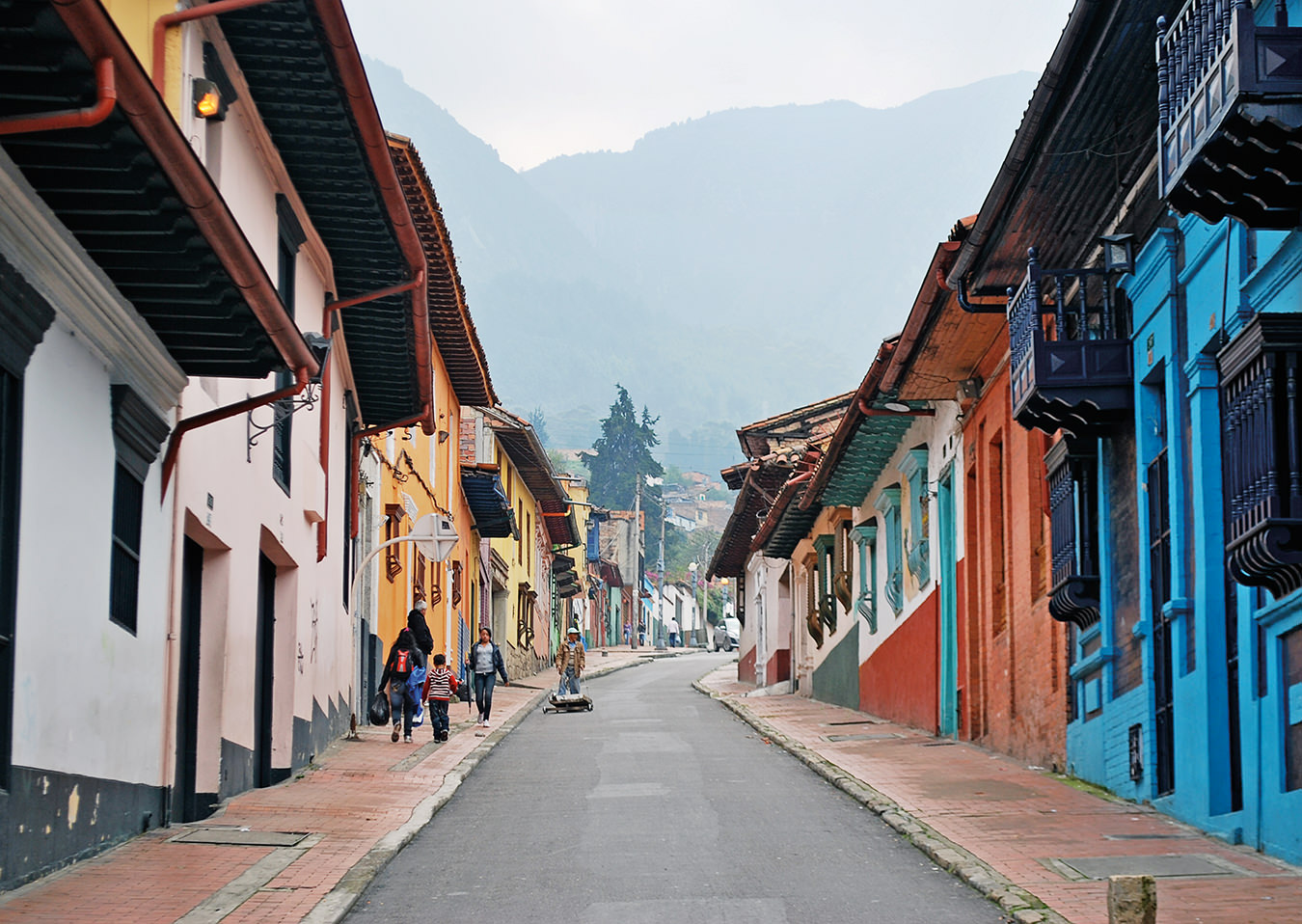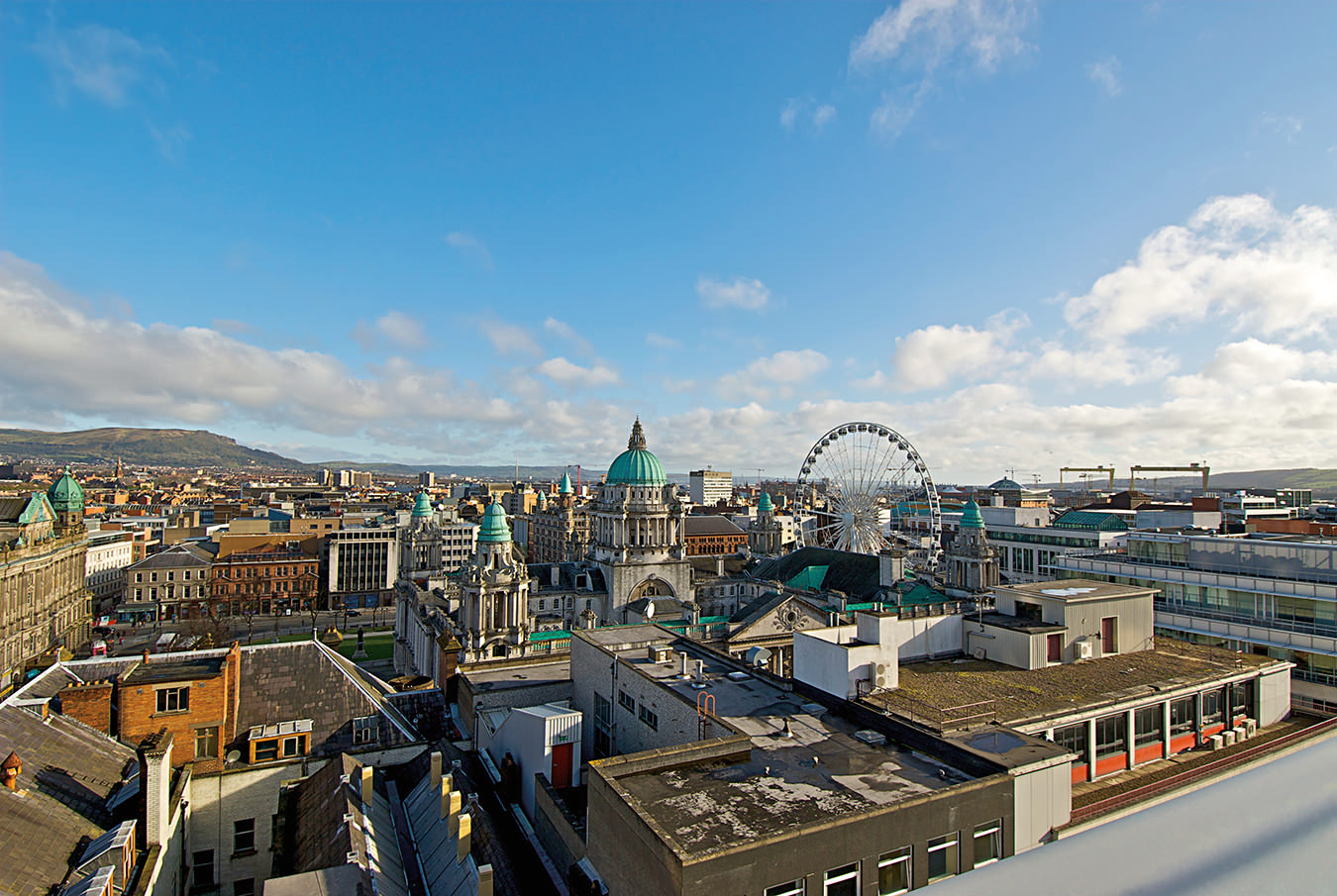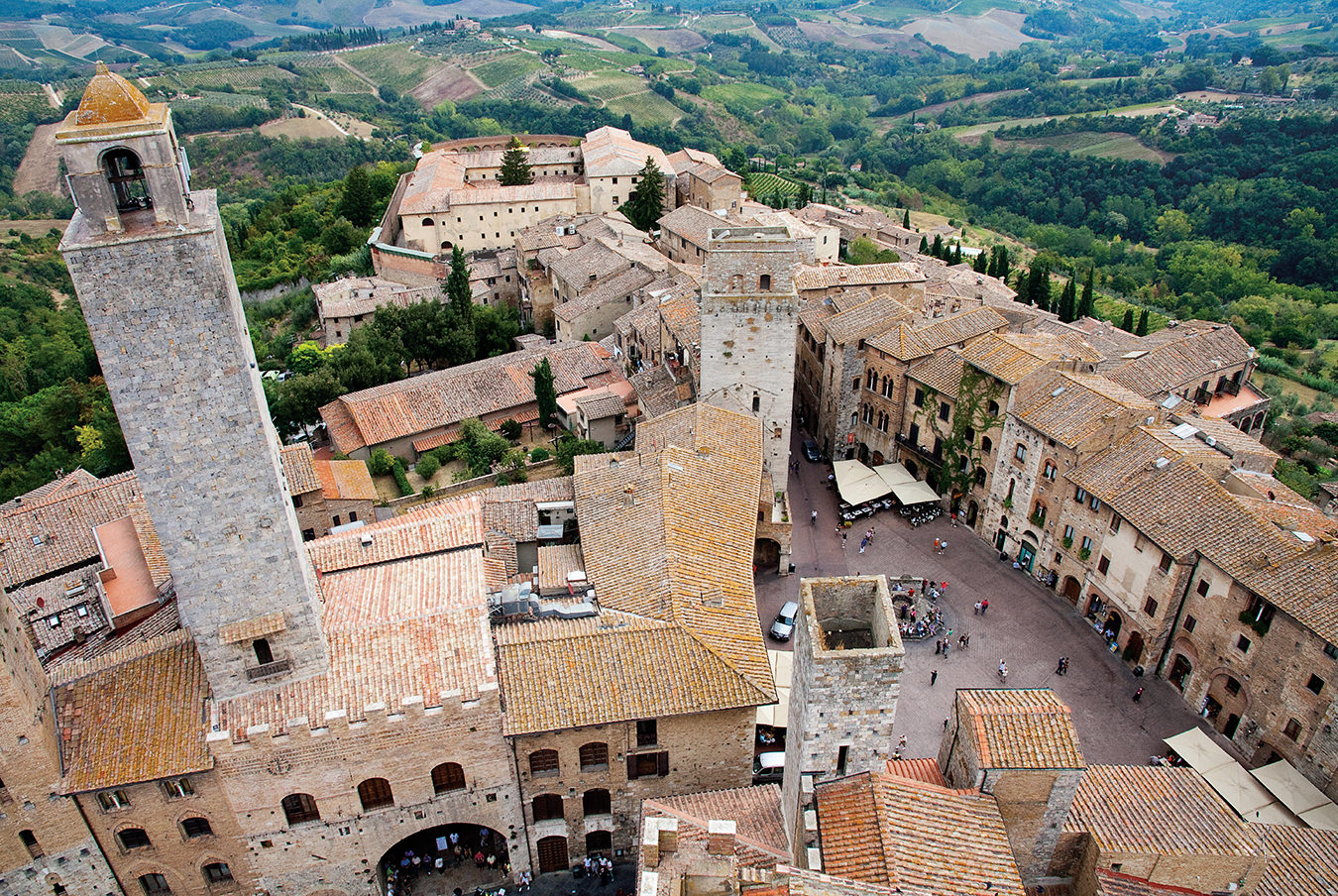-
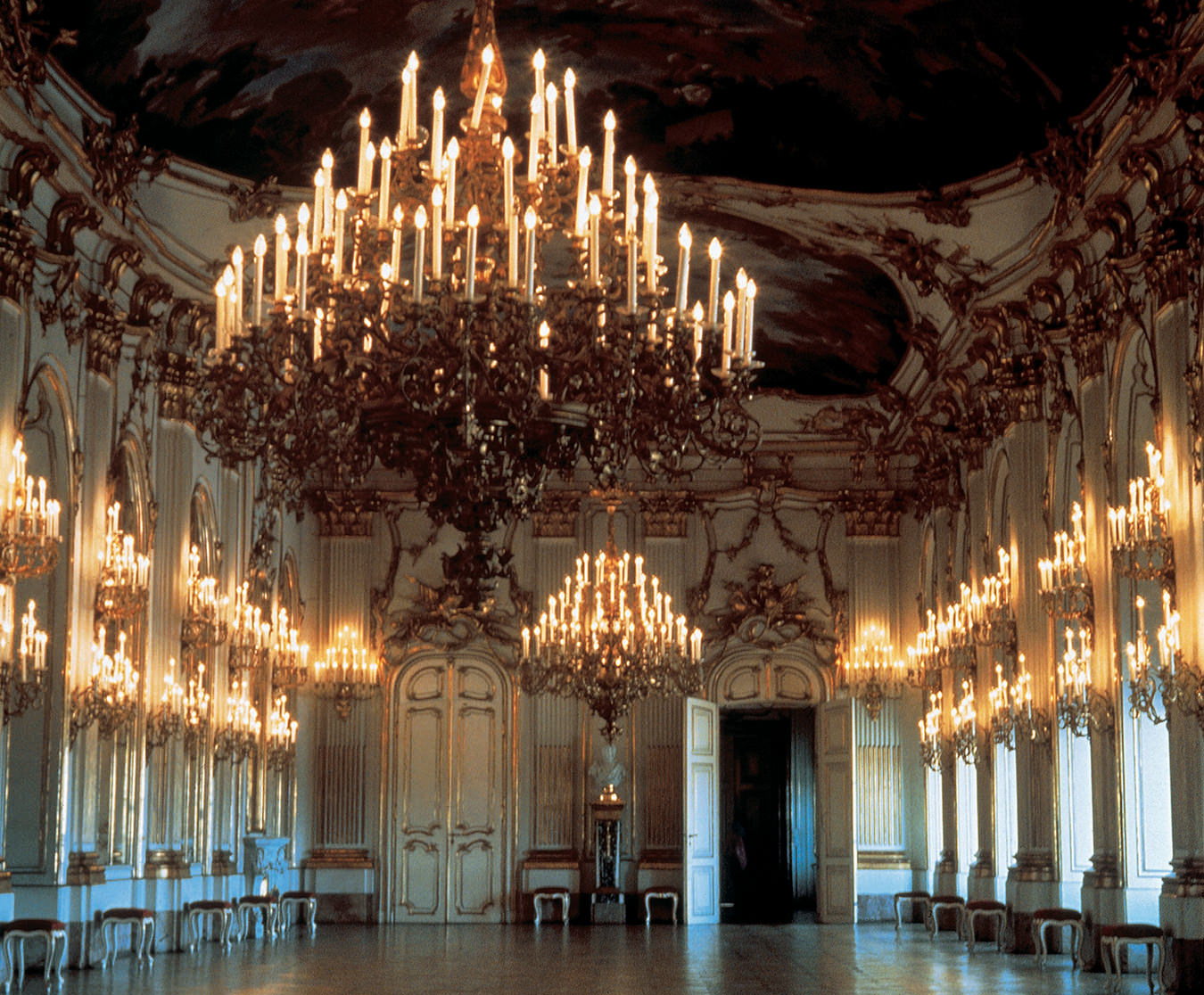
Schönbrunn Palace, The Great Gallery. © WienTourismus/MAXUM.
-

Imperial Palace, St. Michael’s Gate. © WienTourismus/Gerhard Weinkirn.
-
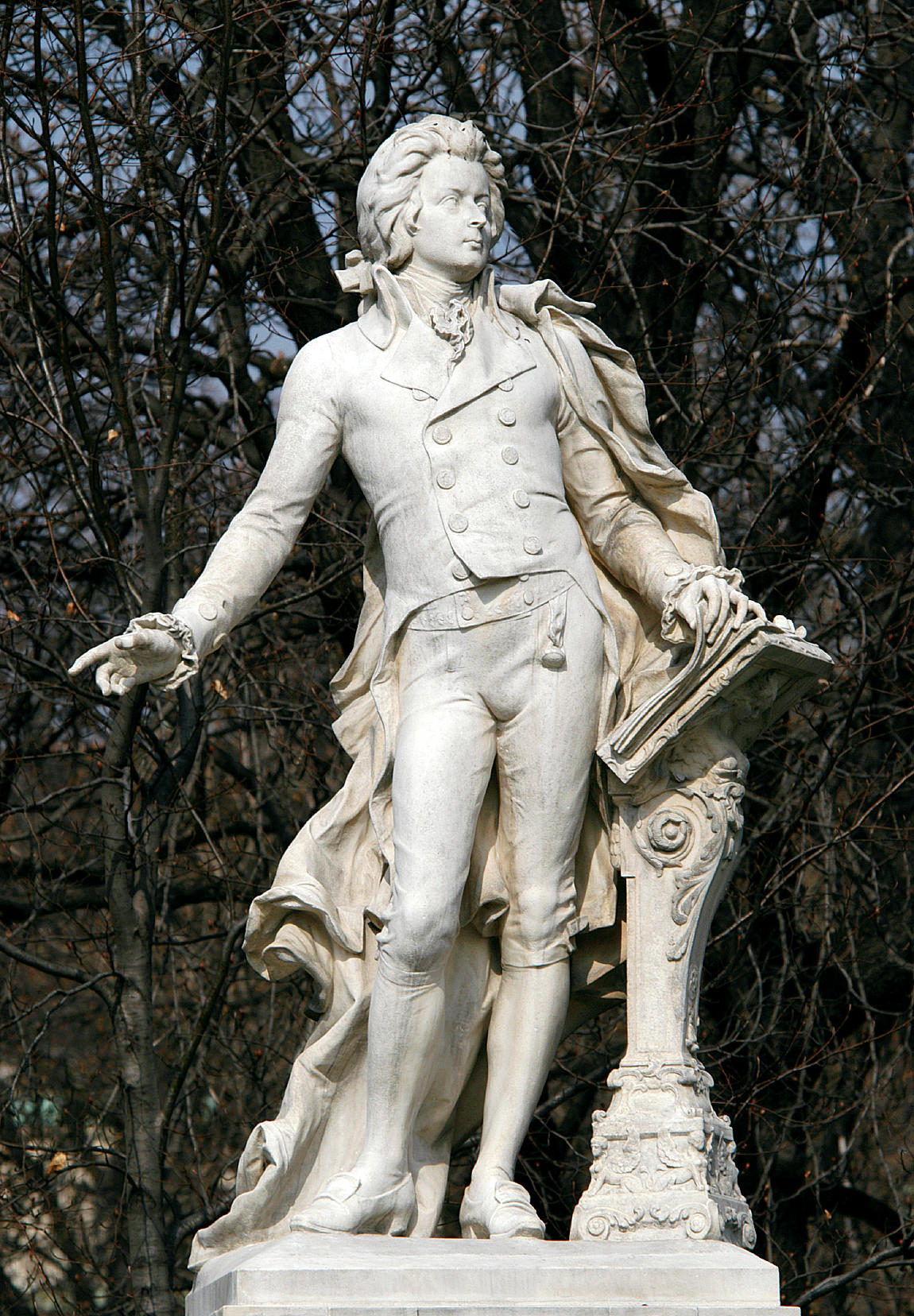
Statue of Wolfgang Amadeus Mozart. © Vladimir Pomortsev.
-
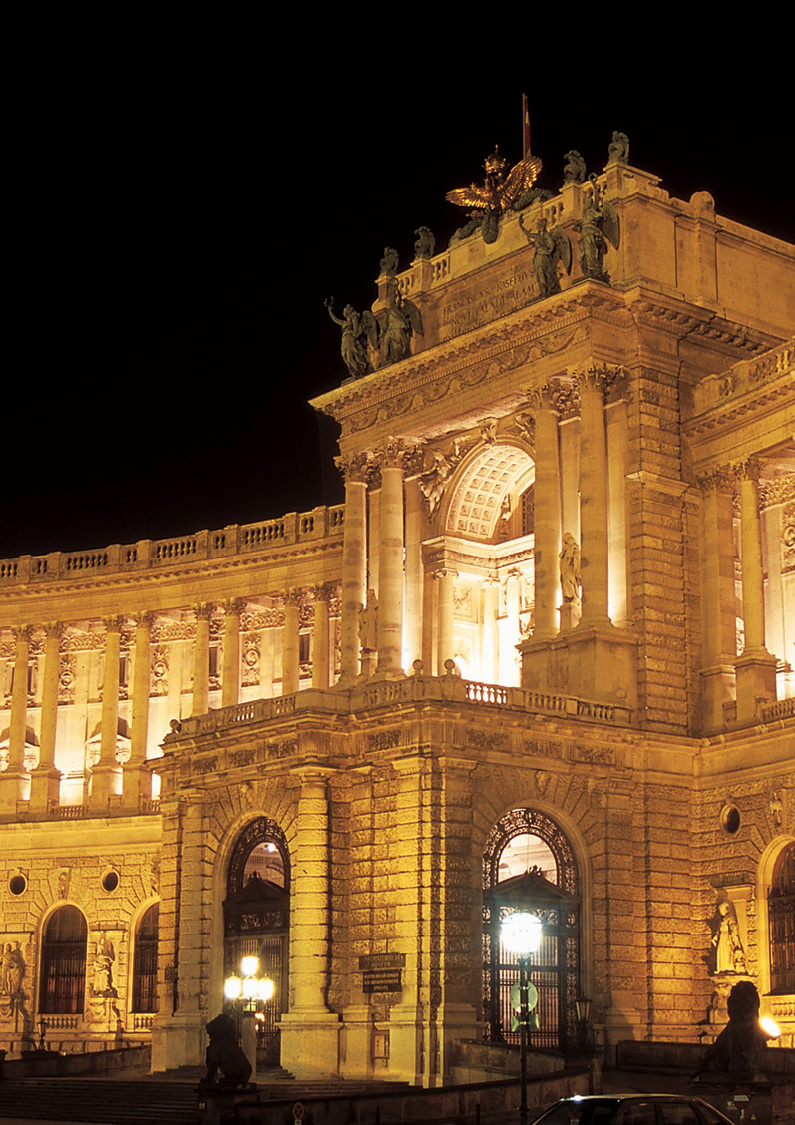
The Imperial Palace at night. Photo ©WienTourismus/Willfried Gredler-Oxenbauer.
-
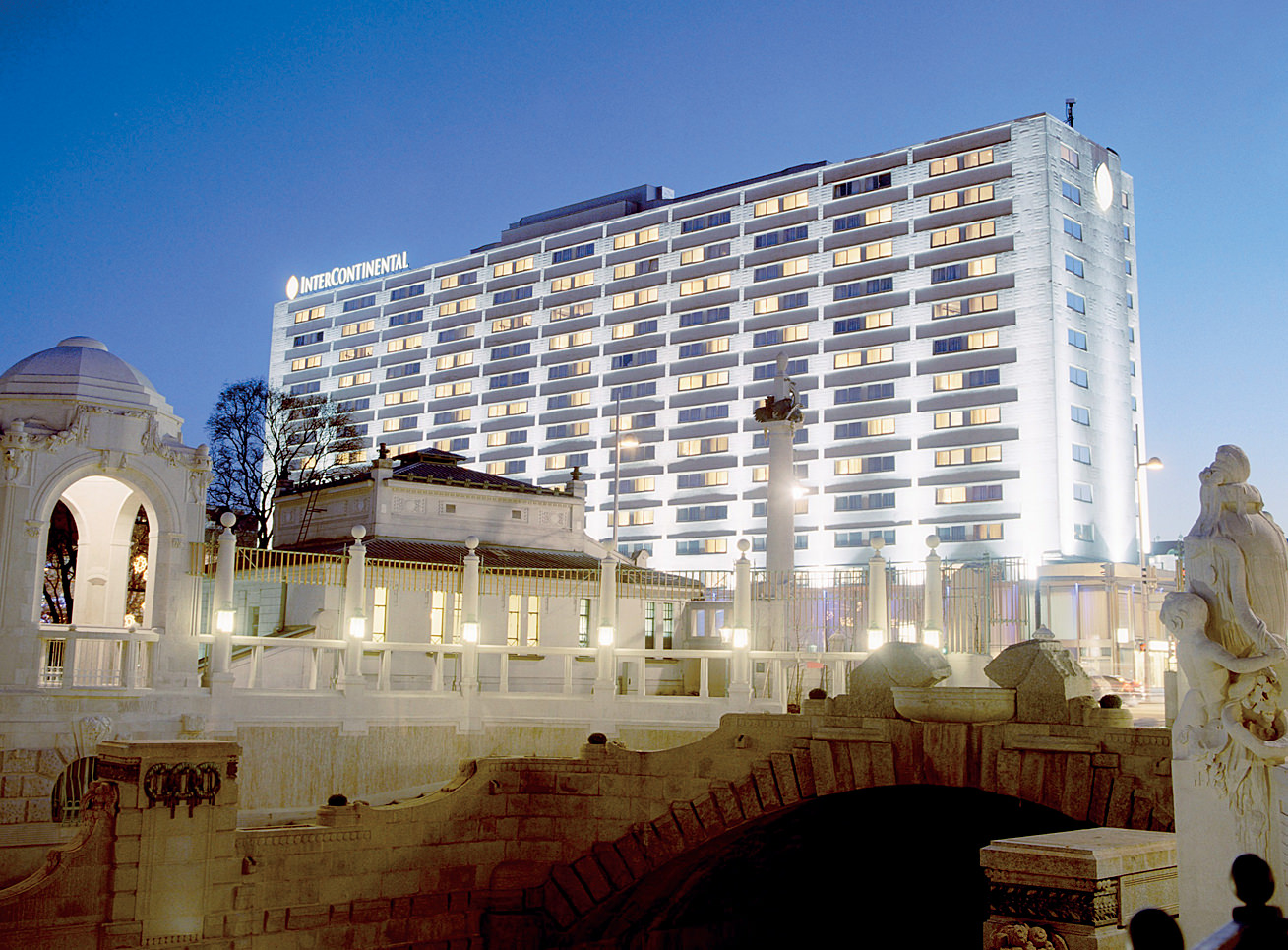
InterContinental Hotel, Vienna Stadtpark. ©WienTourismus/Lois Lammerhuber.
-
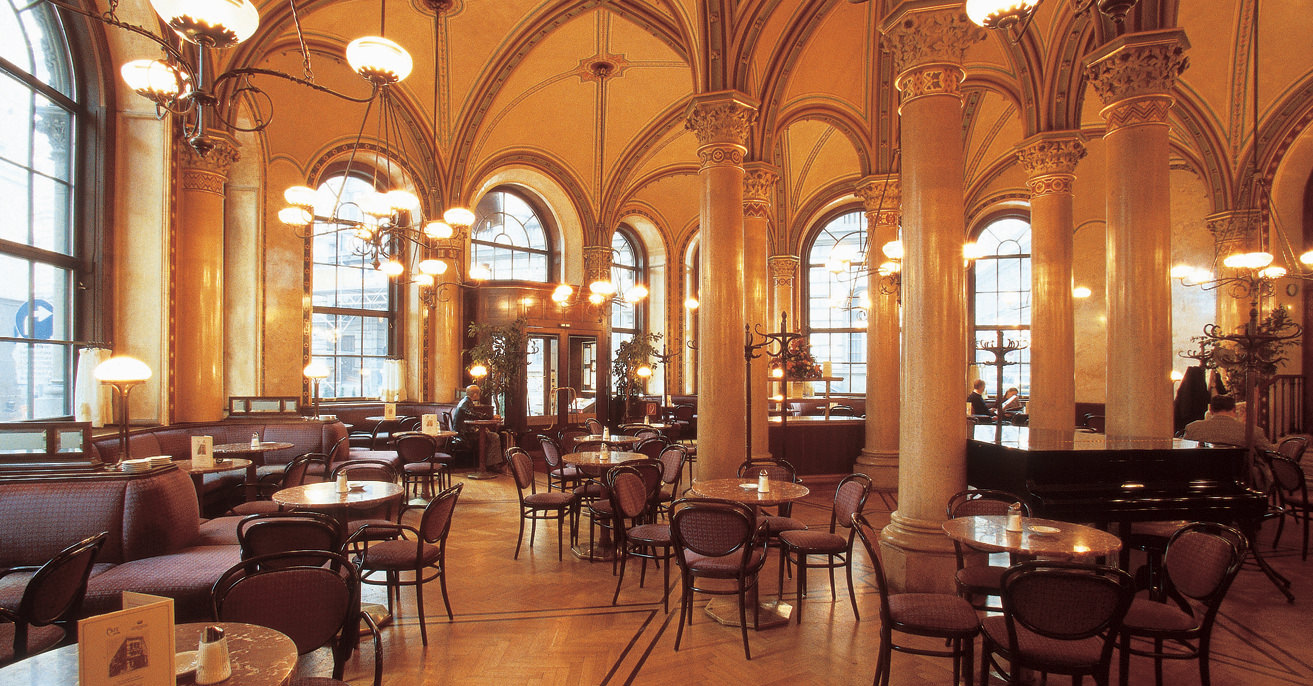
Café Central. ©WienTourismus/Popp & Hackner.
Vienna Calling
Waltzing in the Imperial Palace.
I’m not ashamed to admit it. I had it bad for Captain von Trapp. And yes, I would have babysat seven overactive children just to get close to him. Sheepishly I admit, though, that my Sound of Music fantasies were less about playing matriarch and more about attending glittering balls wearing a decadent silk gown. I used to prance around my bedroom, imagining I was in the arms of Christopher Plummer in his military-regalia period costume. I was the lovely diamond in the rough; he was Herr Handsome. And of course, I danced like a gazelle.
Fast forward to present-day reality, and oh dear, fact is always more sobering than fantasy. “It might help if you didn’t take such large steps,” purrs Thomas Elmayer, bon vivant of the world-renowned dance academy his grandfather founded in 1919. He says “large” but is probably thinking gangly and barbaric. I’m nervous, to put it lightly. It’s not every day that I’m treated to a private Viennese waltz lesson with such an impresario of the art form. The Elmayer Dance School is situated in the rooms of the former horse stables in the Pallavicini Palace, next to the stables of the legendary Spanish Riding School (home of the white stallions) in the heart of Vienna.
As part of the InterContinental Hotel’s innovative “Insider Concierge” program, my dream of box-stepping to the relentless three-count of Strauss’s “Blue Danube” suddenly isn’t that far-fetched. This initiative cultivates the brand’s front line of concierges as the most “in the know” reps imaginable, able to connect guests with truly local elements of the city that fly under the radar of most tourists. Responding to an emerging need for social currency, InterContinental is reviving the golden age of exploration that’s always been a part of its brand heritage. The program certainly “steps it up a notch”, taking the role of the concierge way beyond circling cathedrals on a map. It’s with this privilege of being “connected” that I find myself in Elmayer’s arms, learning to waltz in a grand hall at Hofburg Palace.
Oh, did I forget to mention? The hotel arranged a rather nice little venue; in fact, Hofburg Palace still serves as the seat of the Austrian presidency. This is the Viennese equivalent of learning to line dance at the White House. With Insider Concierge, I’m rather well connected, indeed.
One thing watching old movies did not clue me in about is issues of pace. As Herr Elmayer is spinning me around, I feel as though I’m clinging to a ceiling fan. We’re moving faster than I do on my elliptical trainer! Technically speaking, the Vienna waltz is basically 14 minutes of non-stop stylized spinning. When he takes his trained partner into his arms to demonstrate the correct way, they barely hold on to each other, perfectly synchronized at 30 rpm. Even more incredibly, they chat pleasantly despite the heady whirling. When he reverts back to me, the dilettante, it’s more reminiscent of the pouting, petulant child trapped on the teacup ride at Disneyland.
Waltz society reaches its yearly crescendo in winter, when locals fully indulge their appetite for fine dining and fancy dress. Elegant manners are strictly observed; this is Vienna’s way of reclaiming the grandest traditions of a magnificent age. The Kaffeesiederball (the Coffeehouse Owners Ball) is the largest ball of the season, with more than 5,000 celebrants and a dozen orchestras filling three floors of the Imperial Palace. After the lesson, and perhaps a bruised shin and broken toe or two on the part of Herr Elmayer, I’m offered a backstage tour of the palace. Once the heart of the potent Hapsburg Empire, which controlled most of central Europe from the 13th to the early 20th century, Austria remains one of the region’s richest countries. It’s hard not to be awestruck by the visual impression of Vienna’s imperial past, not only by the architectural marvels, but also by the pedestrian life that swirls around it nonchalantly.
A section of the palace, called the Hofburg Congress Center, is now one of the premiere meeting facilities in Europe. The historical chambers maintain their original character, and today, outfitted with modern IT facilities, provide a dazzling backdrop for important conferences. As I walk these consecrated halls, the white-sugar-frosted mise-en-scène—all heaps of gilded baroque motifs and glazed confectionery ceramic stove towers—reminds me of the opulence of Fragonard’s paintings.
The different wings of the former imperial residence portray the architectural periods of Gothic, Renaissance and Classicism. In 1969, the conversion of part of the palace into the Vienna Congress Center sparked a new starting point to ensure the continuity of this historic site. I visit halls where contemporary dignitaries discuss world affairs in the same glittering arenas where the magnificent wedding banquet of Joseph II and Isabella of Parma took place and where Beethoven’s Symphony No.8 was performed for the first time. The whole complex provides 17,000 square metres of floor space, up to 35 meeting rooms for 60 to 1,300 delegates.
Gemütlichkeit, a German abstract noun, the closest English equivalent of which coziness, is most beautifully observed in Vienna. The word connotes belonging, of “social coziness”. If certain physical and social environments cause stress, gemütlichkeit is a conscious way of precluding such negative impact by going to places and meeting with people who give rise to good feelings.
The centrally located InterContinental Hotel is an ideal starting point for any Vienna agenda. The city’s cosseted candlelit cellar bars, opulent dining rooms and art-deco patisseries are best appreciated on a blustery day. I wander lonely as a cloud, without the crowds that blight this beautiful landscape from spring to autumn. Vienna’s cold-weather credentials include an unparalleled collection of museums and legendary café society. Several fin-de-siècle coffee houses remain.
In search of this certain, social, je ne sais gemütlich, I check into the legendary Café Central. Once upon a time (and surely pungent with the air of exotic tobaccos) this institution caffeinated the lofty thoughts of Egon Schiele, Ludwig Wittgenstein and every other thinker and artist in early 20th-century Vienna. The standard café fare of apfelstrudel and dark roast fortified with whipped cream and rum is perfectly suited to pensive afternoons in sunny café corners. This café proves to be the brainiest hub of activity in the city. Austrians are certainly a contemplative bunch: all public spaces seem geared in every sense to encourage interesting thought patterns. It’s not hard to imagine Leon Trotsky pondering revolution in these rooms.
Vienna’s historic centre, the Innere Stadt, has the greatest concentration of “coffee table book” architecture. This saturation makes orientation a snap, with the Innere Stadt cradled on one side by the Danube canal, and by the Ringstrasse, a series of grand avenues. With a stroll around the Ring, I hit Vienna’s major sights. In the kilometre between the university and the opera house, I take in City Hall and Parliament, and the twin bulks of the Art and Natural History Museums. Conceived in 1857 by Emperor Franz Josef I, the Ring demonstrates the power of the Hapsburgs. As I scan the variety of revivalist styles, the uniformity of his ambition is staggering. The grand boulevards give way to an approachable maze of streets, where I find Vienna’s principal landmark, St. Stephen’s Cathedral, a gothic masterpiece begun in 1359. I walk further along the narrowing streets, where each building is a face from the time of Mozart. It’s surprising to see how lively and integrated they are, with idyllic, intimate flats above and bustling storefronts below.
If you feel you’ve had enough of monumental architecture, Vienna’s not all baroque pomp and neoclassical circumstance. Gustav Klimt founded the secessionist art nouveau school, a reaction against the revivalist excesses of the late 19th century. Notable examples of the city’s art nouveau legacy lie in the most unexpected places.
As the undisputed home of classical music, Vienna housed legendary composers Mozart, Beethoven and Schubert under the generous patronage of the Hapsburgs. The Salzburg Festival, held each summer, enjoys an international reputation and attracts the world’s most talented classical artists.
After a day of museum-hopping and “spire spotting”, I tuck into Vestibül, one of the city’s most popular culinary haunts. Museums, theatres and other cultural venues, previously spared the city’s hectic dynamism, are now the most desirable places to go for refreshment. The Viennese are about as famous for their love of a hearty feast as for the fertility of their artistic life. This space was originally used for the emperor’s coach, creating a setting both antiquated and contemporary. Vestibül takes pride of place in the Burgtheater and naturally attracts a thespian crowd. The luxurious interior—marble, crystal chandeliers and a gorgeous mirrored bar—evokes dining culture in the splendour of the 18th century. Classic regional cuisine presents dishes as varied as fresh oysters, saddle of rabbit and potato noodles, and braised cheeks of veal with bean salad. Haute cuisine meets high culture in this superb cosmopolitan brasserie, which also happens to boast one of the finest gardens in the city.
On the next night’s culinary forage, I discover the nerve centre of Viennese gemütlich lies in the gasthaus—the homey, family-run inn. The secluded inn that I visited, Vickerl’s Lokal, was full to the rafters with loyal regulars. One man arrived with his own mustard, while another made himself instantly at home by casually slipping on a pair of his own slippers. Viennese hospitality is in full bloom, complemented by diverse seasonal ingredients, local products and earthy wine culture. The traditional Beuschel, Styrian beef, and Wiener schnitzel are definite standouts on the simple menu.
All in all, Vienna is a feast for the senses, a living city very much in concert and comfort with its illustrious past. And when it comes to having your signature Vienna moment, rely on InterContinental’s Insider Concierge service. The brand recently partnered with TurnHere, the video insider’s travel guide, to produce a series of short online films offering guests an authentic look at destinations prior to arrival. Concierges from IC properties worldwide narrate the local destination tours. This is a promising industry first, allowing guests to explore destinations via online digital films. TurnHere’s network of professional filmmakers collaborated with concierges to produce a series of brief films featuring overviews of each destination and not-to-be-missed local and authentic experiences. InterContinental is planning to create a film for each of its 144 properties around the globe, providing guests with a truly local destination experience. Certainly, a visit with them in Vienna will ensure that the hills are, indeed, alive.

